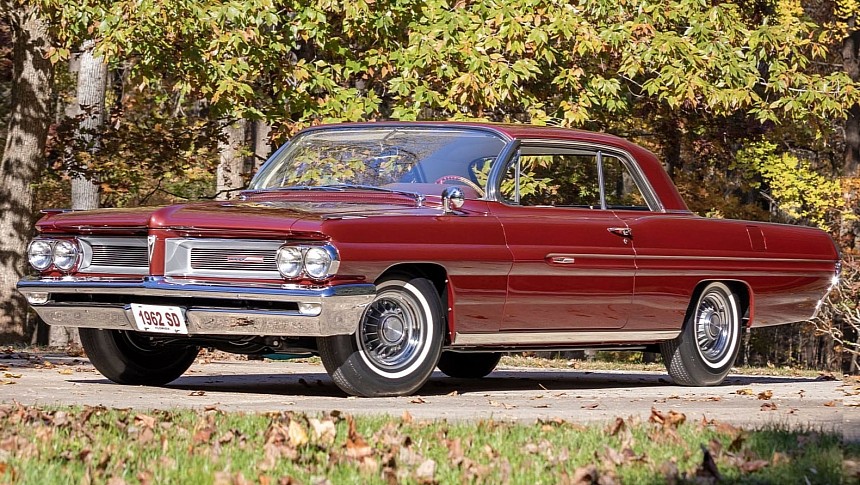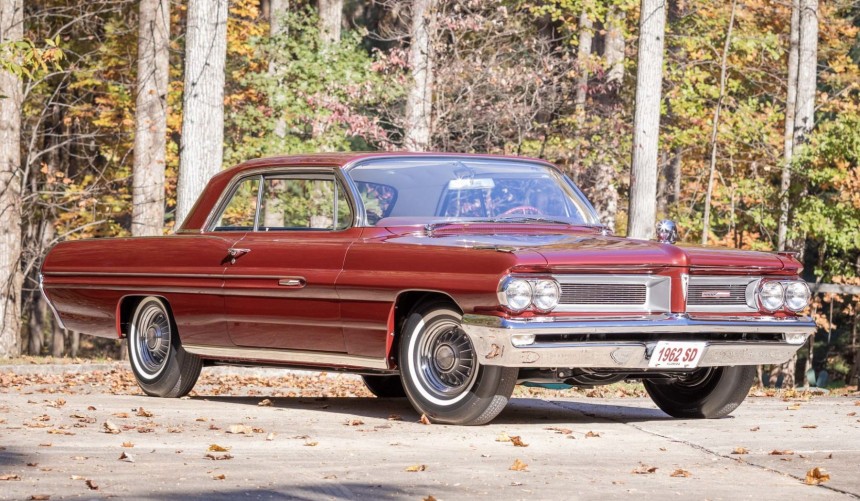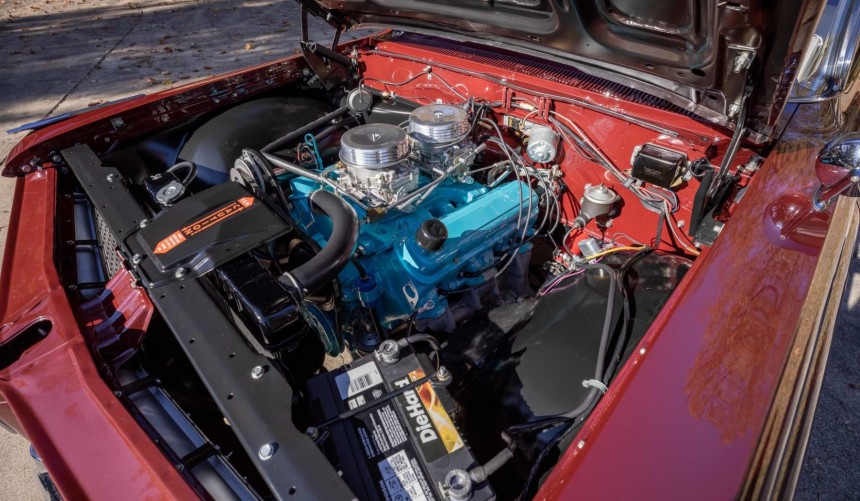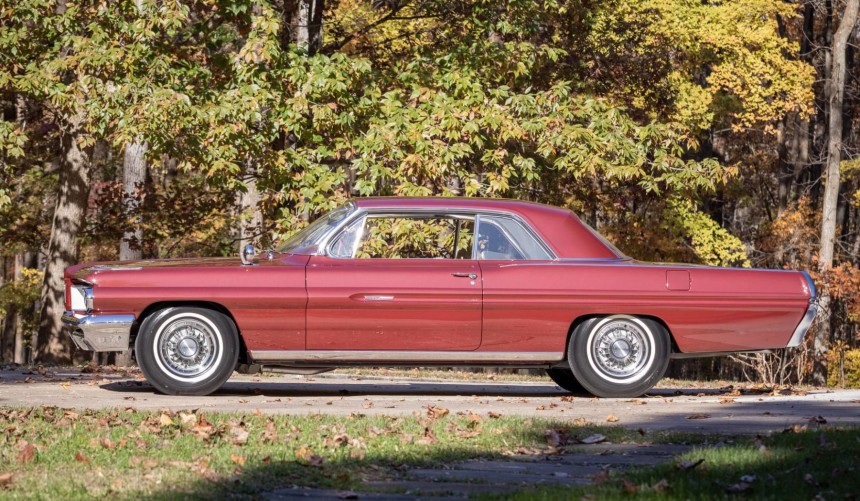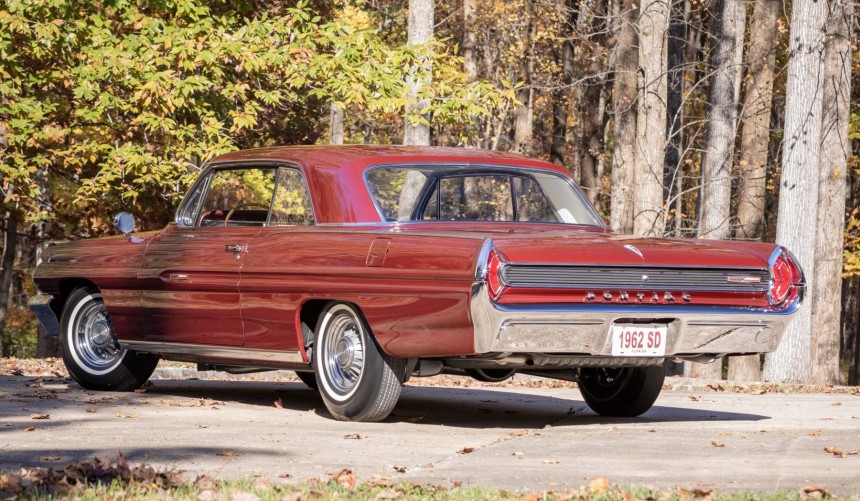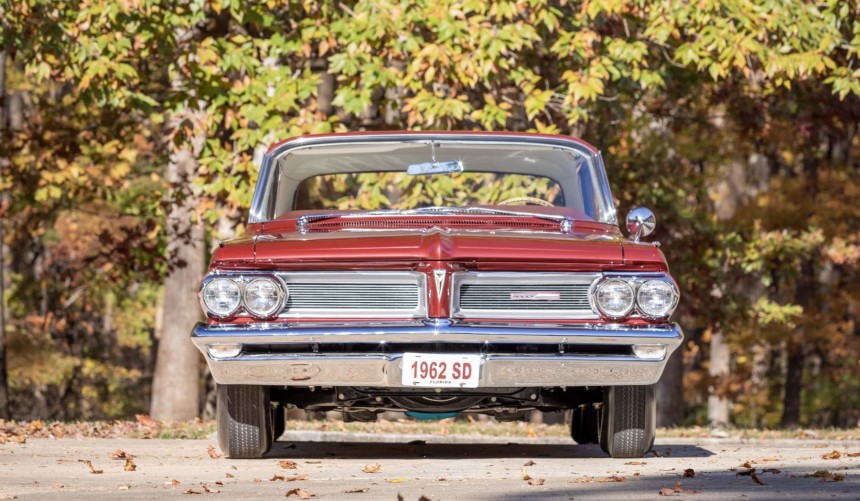Though it was a full-size coupe, the new Grand Prix was transformed into one of Pontiac's first muscle cars months after its introduction when the GM division added the 421 Super Duty engine to its options list.
For purists, a muscle car is an American-made intermediate coupe equipped with a powerful V8, but for most enthusiasts, the term is also applied to models that share the same characteristics, save for the platform size.
Smaller rides like pony cars and compacts, or larger ones like full-size models, have earned the right to be called muscle cars after receiving highly potent eight-cylinder lumps.
One of these atypical muscle cars was the 421 Super Duty-equipped 1962 Pontiac Grand Prix, a model so rare that it became a myth.
Until the late fifties, the GM division focused on producing upscale models without emphasizing high performance.
However, that would soon change thanks to engineering and marketing masterminds Pete Estes and John DeLorean.
By 1961, Pontiac was present on the strip and the track, building a new reputation that would eventually transform the brand into GM's performance division.
For the 1962 model year, Pontiac introduced a new full-size sports coupe dubbed Grand Prix that hid a 389-ci (6.4-liter) Trophy V8 with race pedigree under its hood. The engine could be had in multiple configurations, the most capable of which was a 348-hp Tri-Power.
Later in the model year, performance enthusiasts who wanted a more powerful Grand Prix were given a new option: the mighty 421 Super Duty.
The consensus is that muscle cars (or supercars, as they were called back then) started to become popular from 1964 onwards, thanks to Pontiac's GTO.
However, the trend of stuffing high-performance V8s in the engine bays of factory models began a few years earlier, and the Grand Prix is one of the earliest Pontiacs to employ it.
The motor started life as a 389 enlarged to 421 ci (7.0 liters). It was the first of the "big journal" Pontiac V8s, conceived for track and drag strip dominance.
Equipped with two Carter S4299 four-barrel carbs and linked to a Borg-Warner four-speed manual, the 421 Super Duty was rated at 405 hp, which made it one of the most potent V8s that could be had in an American production car during that model year.
The engine was also used in factory-backed race programs, but sadly, it was discontinued just a year earlier as GM temporarily withdrew its brands from motorsport competitions.
The Super Duty started showing up on the Grand Prix order form during the closing months of the 1962 model year. It didn't benefit from any advertising campaigns and was available in a few Pontiac dealerships as an ultra-expensive $2,250 ($22,260 in 2023 money) option.
Adding the option gave customers a highly powerful engine and a 4.30:1-ratio, 10-bolt rear axle, but not much else. The Super Duty-equipped Grand Prix looked exactly like the standard model.
The new-for-1962 Grand Prix was an elegant and imposing presence thanks to its boxy and aggressive lines.
Inside, it came standard with Naugahyde (artificial leather) upholstery, a padded instrument panel, a deluxe steering wheel, and a center console with an embedded tach. The list of upscale options included front bucket seats (power adjustable on the driver's side), Bi-Phonic rear speakers, or power windows.
Surprisingly quick and extremely rare
The Super Duty Grand Prix was the ultimate weapon for performance enthusiasts who wanted to win stoplight battles and break records at their local drag strip.
.
Though it weighed nearly 4,000 pounds (1,814 kg), the sleeper was allegedly capable of accelerating to 60 mph (97 kph) from a standstill in about 6 seconds. Furthermore, it could run the quarter mile in the low-13s at over 100 mph (161 kph).
Those figures made it the fastest performance model of its size, with unassuming drivers of SS-equipped 401 Chevy Impalas or 406 Ford Galaxies having to gaze at the Grand Prix's beautifully sculptured rear end.
But despite the car's capabilities, the Super Duty option was insanely expensive, so Pontiac only sold 16 of 30,195 Grand Prix equipped with the heavy-hitting package.
According to a Hemmings article, this changed in the 1990s when one of these surviving rarities emerged. More were discovered in the years that followed, and these days, only five of the sixteen factory-built 1962 models are accounted for.
In 2022, the Burgundy survivor featured in this article was auctioned off at a Mecum event. Masterfully restored by Scott Tiemann of Supercar Specialties, it fetched $253,000.
Whether you want to call it a proto-muscle car, a high-performance full-size coupe, or a thoroughbred muscle car, the 1962 Grand Prix 421 Super Duty remains one of the rarest, most potent American cars from the 1960s and one of Pontiac's all-time greatest performance vehicles.
We recommend watching the YouTube video by Two Guys and a Ride for a virtual tour of the aforementioned survivor.
Smaller rides like pony cars and compacts, or larger ones like full-size models, have earned the right to be called muscle cars after receiving highly potent eight-cylinder lumps.
One of these atypical muscle cars was the 421 Super Duty-equipped 1962 Pontiac Grand Prix, a model so rare that it became a myth.
Part of Pontiac's shift towards high-performance
However, that would soon change thanks to engineering and marketing masterminds Pete Estes and John DeLorean.
By 1961, Pontiac was present on the strip and the track, building a new reputation that would eventually transform the brand into GM's performance division.
For the 1962 model year, Pontiac introduced a new full-size sports coupe dubbed Grand Prix that hid a 389-ci (6.4-liter) Trophy V8 with race pedigree under its hood. The engine could be had in multiple configurations, the most capable of which was a 348-hp Tri-Power.
Later in the model year, performance enthusiasts who wanted a more powerful Grand Prix were given a new option: the mighty 421 Super Duty.
A muscle car engine before the muscle car era officially began
However, the trend of stuffing high-performance V8s in the engine bays of factory models began a few years earlier, and the Grand Prix is one of the earliest Pontiacs to employ it.
The motor started life as a 389 enlarged to 421 ci (7.0 liters). It was the first of the "big journal" Pontiac V8s, conceived for track and drag strip dominance.
Equipped with two Carter S4299 four-barrel carbs and linked to a Borg-Warner four-speed manual, the 421 Super Duty was rated at 405 hp, which made it one of the most potent V8s that could be had in an American production car during that model year.
The engine was also used in factory-backed race programs, but sadly, it was discontinued just a year earlier as GM temporarily withdrew its brands from motorsport competitions.
A factory sleeper
Adding the option gave customers a highly powerful engine and a 4.30:1-ratio, 10-bolt rear axle, but not much else. The Super Duty-equipped Grand Prix looked exactly like the standard model.
The new-for-1962 Grand Prix was an elegant and imposing presence thanks to its boxy and aggressive lines.
Inside, it came standard with Naugahyde (artificial leather) upholstery, a padded instrument panel, a deluxe steering wheel, and a center console with an embedded tach. The list of upscale options included front bucket seats (power adjustable on the driver's side), Bi-Phonic rear speakers, or power windows.
Surprisingly quick and extremely rare
The Super Duty Grand Prix was the ultimate weapon for performance enthusiasts who wanted to win stoplight battles and break records at their local drag strip.
.
Though it weighed nearly 4,000 pounds (1,814 kg), the sleeper was allegedly capable of accelerating to 60 mph (97 kph) from a standstill in about 6 seconds. Furthermore, it could run the quarter mile in the low-13s at over 100 mph (161 kph).
Those figures made it the fastest performance model of its size, with unassuming drivers of SS-equipped 401 Chevy Impalas or 406 Ford Galaxies having to gaze at the Grand Prix's beautifully sculptured rear end.
But despite the car's capabilities, the Super Duty option was insanely expensive, so Pontiac only sold 16 of 30,195 Grand Prix equipped with the heavy-hitting package.
The 1962 Grand Prix 421 Super Duty today
As decades passed, the rare model became a myth. Some enthusiasts swore that they either saw or owned one, while others remained skeptical as no surviving, factory-built 1962 Super Duty Grand Prix examples were known to exist.According to a Hemmings article, this changed in the 1990s when one of these surviving rarities emerged. More were discovered in the years that followed, and these days, only five of the sixteen factory-built 1962 models are accounted for.
In 2022, the Burgundy survivor featured in this article was auctioned off at a Mecum event. Masterfully restored by Scott Tiemann of Supercar Specialties, it fetched $253,000.
Whether you want to call it a proto-muscle car, a high-performance full-size coupe, or a thoroughbred muscle car, the 1962 Grand Prix 421 Super Duty remains one of the rarest, most potent American cars from the 1960s and one of Pontiac's all-time greatest performance vehicles.
We recommend watching the YouTube video by Two Guys and a Ride for a virtual tour of the aforementioned survivor.
